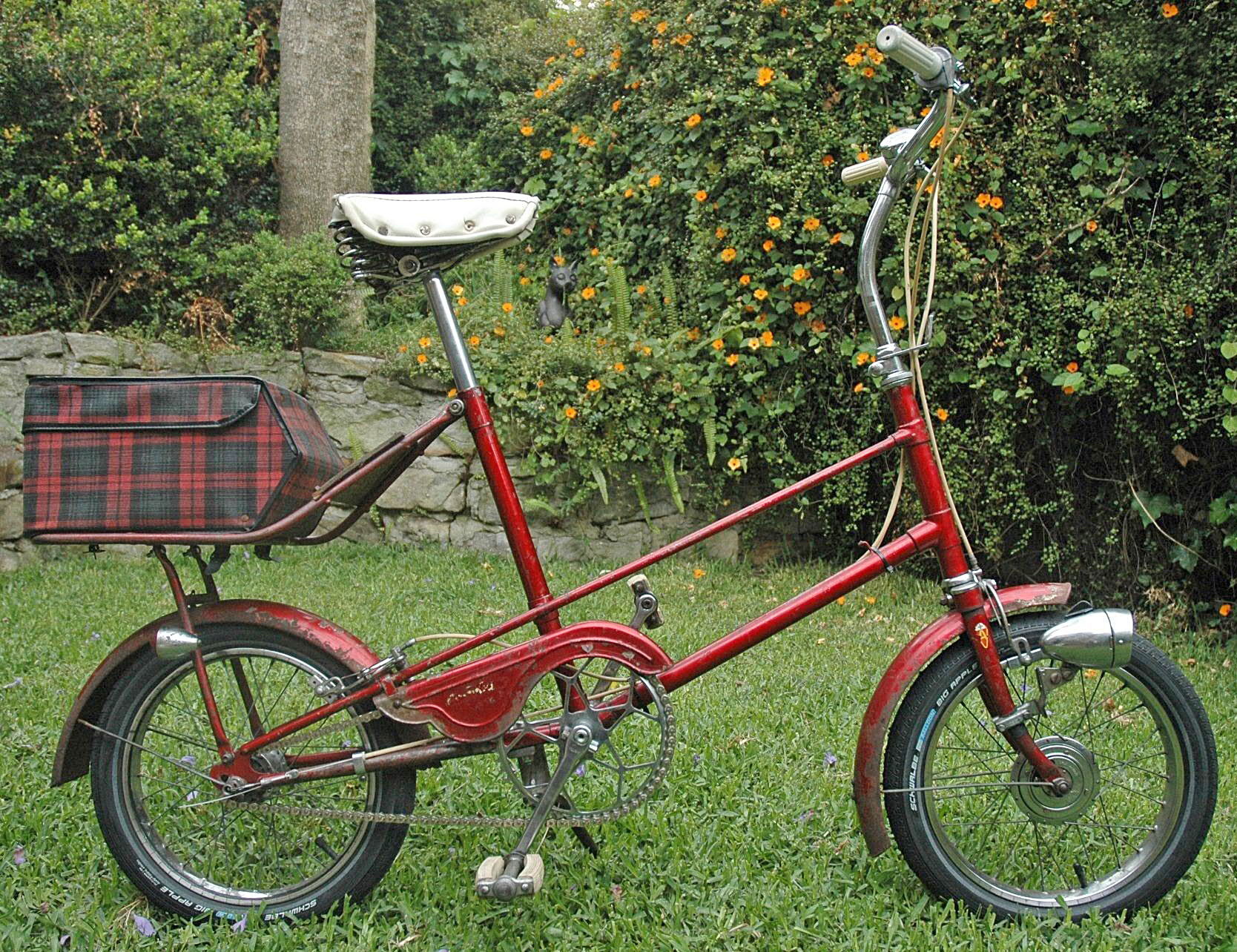Clark Scamp on:
[Wikipedia]
[Google]
[Amazon]
The Clark Scamp was a simple, bicycle-based moped similar in concept to the earlier '
Iceni Cam Mag. Retrieved 2013-04-30
Clark Masts History. Retrieved 2013-04-29 It combined a proprietary 1960s small-wheel cycle-type frame (obtained from the The Co-operative Group, Co-operative Wholesale Society which sold the bicycle as the ''Commuter'') with modifications to mount an innovative 50cc two-stroke engine close to (and outboard of) the rear wheel. Manufacturing principal Alec Clark was an engineer with much experience of engine design including small-capacity two-strokes, having formerly worked for Trojan, a car manufacturer in Croydon, UK which in the 1960s offered a scooter and a light three-wheeler car and had undertaken development work for LeylandMotor Cyclist Illustrated, April 1968, Editor/author Cyril Quantrill. Retrieved 2013-04-29 With the exception of the Italian magneto and carburettor, all of the engine work was stated to be British-made. ''Motorcycle Mechanics'', January 1968, p.17. ''Looking ahead. "The bike is called the Scamp and prototypes have been tested using an engine especially designed for it''". Accessed 5 July 2015 Unfortunately, it was claimed by a Mr Coco that the Clark power unit was very similar to his own design which he had been trying to sell to Clarks for several months in 1967, before being informed that his design driving the rear wheel by friction caused unacceptable wear to the rear tyre and would not therefore be used.
By the time the machine appeared on the market, it had a different drive mechanism but it was apparent that the power unit was closely related to the Coco design, so the designer sued for
Unfortunately, it was claimed by a Mr Coco that the Clark power unit was very similar to his own design which he had been trying to sell to Clarks for several months in 1967, before being informed that his design driving the rear wheel by friction caused unacceptable wear to the rear tyre and would not therefore be used.
By the time the machine appeared on the market, it had a different drive mechanism but it was apparent that the power unit was closely related to the Coco design, so the designer sued for
Coco v AN Clark (Engineers) Limited
969FSR 415, 069R.P.C. 49 (Ch) remains a fundamental statement of the principles of law in this area. An application for an interlocutory injunction to prevent any manufacture pending a trial outcome was refused at a hearing (the defendant undertaking instead to pay a royalty of five shillings per engine to be held in a deposit account and later apportioned after a trial ruling). The trial never took place and the machine was discontinued after a production run estimated at 3,000 to 4,000. The company known as AN Clark (Engineers) Limited went into administration, and a new business - Clark Masts Limited - was formed to carry on manufacture of the core-business product.
winged wheel
A winged wheel is a symbol used historically on monuments by the Ancient Greeks and Romans and more recently as a heraldic charge. The symbol was associated with the Ancient Greek god Hermes and as a representation of the chariot (or velocipede) ...
' or cyclemotor, manufactured from March to November 1968 by Alec Clark, of A N Clark (Engineers) Limited, a business which normally manufactured telescopic extendable masts for antennas and small gearboxes for handtools in Binstead, Isle of Wight, England ''Motorcycle Mechanics'', January 1968, p.17. ''Looking ahead. "Down on the Island it's all British—we think!''". Accessed 5 July 2015Iceni Cam Mag. Retrieved 2013-04-30
Clark Masts History. Retrieved 2013-04-29 It combined a proprietary 1960s small-wheel cycle-type frame (obtained from the The Co-operative Group, Co-operative Wholesale Society which sold the bicycle as the ''Commuter'') with modifications to mount an innovative 50cc two-stroke engine close to (and outboard of) the rear wheel. Manufacturing principal Alec Clark was an engineer with much experience of engine design including small-capacity two-strokes, having formerly worked for Trojan, a car manufacturer in Croydon, UK which in the 1960s offered a scooter and a light three-wheeler car and had undertaken development work for LeylandMotor Cyclist Illustrated, April 1968, Editor/author Cyril Quantrill. Retrieved 2013-04-29 With the exception of the Italian magneto and carburettor, all of the engine work was stated to be British-made. ''Motorcycle Mechanics'', January 1968, p.17. ''Looking ahead. "The bike is called the Scamp and prototypes have been tested using an engine especially designed for it''". Accessed 5 July 2015
breach of confidence
The tort
A tort is a civil wrong that causes a claimant to suffer loss or harm, resulting in legal liability for the person who commits the tortious act. Tort law can be contrasted with criminal law, which deals with criminal wrongs that are ...
in that the drawings and prototype engine had been supplied to Clark for evaluation.
The resulting caseCoco v AN Clark (Engineers) Limited
969FSR 415, 069R.P.C. 49 (Ch) remains a fundamental statement of the principles of law in this area. An application for an interlocutory injunction to prevent any manufacture pending a trial outcome was refused at a hearing (the defendant undertaking instead to pay a royalty of five shillings per engine to be held in a deposit account and later apportioned after a trial ruling). The trial never took place and the machine was discontinued after a production run estimated at 3,000 to 4,000. The company known as AN Clark (Engineers) Limited went into administration, and a new business - Clark Masts Limited - was formed to carry on manufacture of the core-business product.
Notes